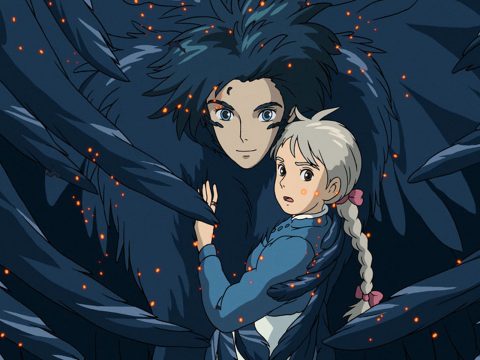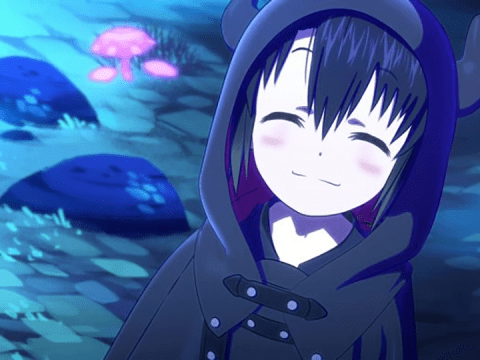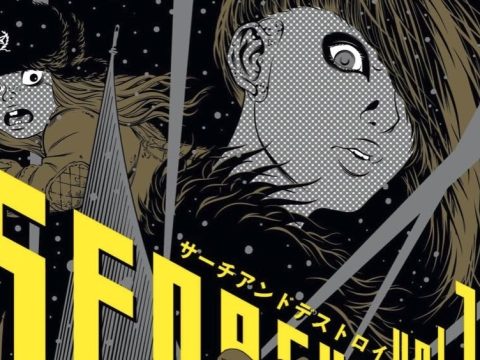
Christianity gets all the good movies. Oh sure, they get quite a few stinkers, but if a Left Behind is what it takes to get a Jesus of Montreal or The Gospel According to Matthew (which was produced by a gay communist for crying out loud), then so be it. Even Japan got in on the game once upon time with Superbook, and Osamu Tezuka spent the final days of his life preparing for the biblical series In the Beginning. On the other hand, Buddhism gets nowhere near the same cinematic recognition even within Asia.
So it was with great curiosity that I approached Osamu Tezuka’s Buddha: The Great Departure. After all, it’s based off of a massive, ambitious work which in turn is based on one of the most important figures in philosophy and theology, written by none other than the overworked hands of Osamu Tezuka, a man who needs no introduction to our readers. Furthermore, the large promotional campaign, boasting an all-star cast and even a brand-new song by X-Japan, all wrapped up in a theatrical budget with memories of Rintaro’s dazzling Osamu Tezuka’s Metropolis, raised expectations to sky-high levels. Granted, it was the workhorses at Toei and not the creatives at Madhouse who would be behind the wheel but hey, you got Warner Bros pouring in the cash, posters plastered all over Tokyo, and Toei had managed to bring us a young Mamoru Hosoda. There’s just about no way it could fail, right? RIGHT!?!
Right from the opening, there is a sense of over-condensing a long and weaving tale. What a tale it is, too: while ostensibly about Siddhartha’s foretold birth and maturation from naïve child to trained warrior-prince and ultimately to acetic teacher, the lion’s share of the film (and character development) is given to Chapra, a fictional (and quite Oedipal) slave who is adopted by a general after a battle and manages to break through the Hindu caste system to become a military leader himself. Covering the span of over 30 years, there is room for much depth here—the contrast between Chapra’s thirst for power and Siddhartha’s urge to be rid of it as he discovers the evils in the world. It’s the sort of material that provides much fodder to ponder on the struggle between fate, free will, personal integrity and the vices and virtues that drive men to do unthinkable things.

I have to confess that I have yet to read Tezuka’s original in its entirety, but from what little I have read, it is an expansive work that doesn’t make much room for exposition. Yet it never comes off as overwhelming, since Tezuka manages to weave the background details into his dialogue or, just as often, go for stretches with hardly a word being spoken, letting events speak for themselves. An example of this is an early scene where the ancient sage Asita, the Buddhist equivalent to John the Baptist, is starving in a wind-swept snowy mountain and finds himself surrounded by a rabbit, a fox and a bear, with the rabbit bringing branches to ‘tell’ Asita to start a fire. After he does so, the rabbit immediately immolates itself to give him a meal, saving his life but bringing much sadness to the old man. On paper, it is 10 pages that flow like a movie, despite not having a single word of dialogue.
In contrast, in the film adaptation, this scene is full of Asita talking to the aforementioned forest animals and narrating his own thoughts, robbing the scene of much of its poetry. As if to make clear of its approach to us, not long after that scene we are treated to a prologue info-dump full of historical background information, complete with charts showing the Siddhartha’s home kingdom of Shakya and how it is under threat of siege from neighboring Kosala. While those who know nothing of history might appreciate the added context, it feels like a better fit for the History Channel than a narrative motion picture.
Not content to stop there, there are constant TV drama-style captions that are repeated throughout the film to inform us just what part of ancient India we happen to be in as the story jumps around from character to character, complete with furigana readings over the kanji. Perhaps this is helpful for the children of a family audience (and the odd foreigner desperately trying to keep up with the action), but not so much for the art of cinema.
Indeed, if there is a want of something in this movie, it’s art. Director Kozo Morishita, veteran of several classic shows including Cutie Honey, Saint Seiya and Transformers, evokes painful memories of Goro Miyazaki’s Tales from Earthsea in that we see a not-untalented man who is nonetheless far too out of his depth to properly bring the material together. More often than not, the animation is barely above TV quality and the cookie-cutter framing employed does little to hide that. Whereas Tezuka, in his manga layouts, employed lots of wide vistas and had an obsession with almost geometrically-layered crowd scenes, Morishita more often than not goes for standard framing devoid of pizazz—even the frequent battles employing thousands of cavalrymen swinging and tossing steel at each other lack a sense of urgency. An article interviewing director Morishita suggests that this bare-bones approach was intentional yet feels as though it was the wrong one to take. Essentially about the wisdom of humility in a world full of ambitious scheming wolves, this is a story that screams for an Osamu Dezaki to take the reins and inject some much-needed drama or at least a sense of pace into the thing much like he did with In the Beginning.
Worst of all, we don’t ever really get a sense of who Buddha is through his actions and feel empathy for him as we do for Chapra. With Chapra, we see a slave literally fight his way to the top of the food chain and gain the respect of those around him; all the while, truly just longing to be reunited with his mother in a way that would leave Sigmund Freud salivating. In Siddhartha, on the other hand, we see a boy who grows up in the lap of luxury and, due to his underdevelopment, he comes across more as an self-centered emo kid who can’t cope with the world, as opposed to one of the future leading spiritual leaders in the world who teaches how to overcome said evils. The Last Temptation of Christ this isn’t. Hell, this is barely Jesus Christ Superstar.
That’s not to say that the affair is a complete waste. There are little glimmers of brilliance—Siddhartha’s first venture outside of his palace walls accompanied by a beautiful bandit showing him the aging, sick and dying that led to his famous rejection of worldly things puts a human face on a legend that makes it even more heartbreaking when the brief romance meets its end. Likewise, there is an well-executed montage in the latter half as a soul-shifting boy jumps from animal to animal in trying to deliver a letter, evoking the Tezuka who loved nature while always being aware and respectful of its power. The topper is the aftermath of a climatic battle which I will not spoil, but merits mention for poetically demonstrating the irrelevance of power and the virtue in transcendence, as well as that this movie’s best moments come when it takes the time to hold its tongue.
Alas, these embers are few and far between on this burnt log. The film ends on an open note and there is apparently a trilogy of Buddha films planned. If this is any indication of what’s to come, the reader would best be advised to stick to the books. Ironically, as with so many of its heroes and villains, Osamu Tezuka’s Buddha falls victim to its own ambitions of greatness.
Fernando Ramos is a Japan correspondent for Otaku USA. His website can be found at www.mroutside.com
© 2011 [Osamu Tezuka’s Buddha] Production Committee







